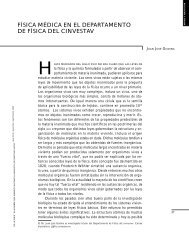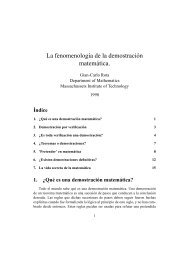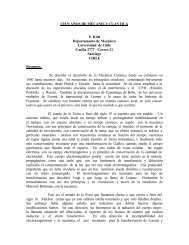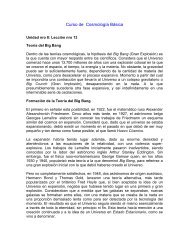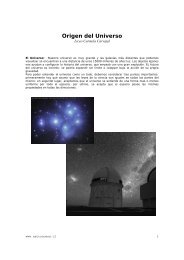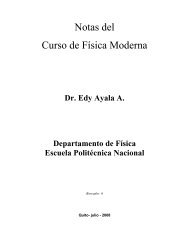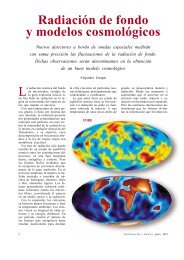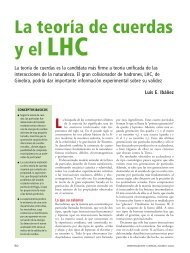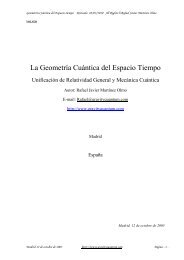Análisis Tensorial y GeometrÃa de Riemann
Análisis Tensorial y GeometrÃa de Riemann
Análisis Tensorial y GeometrÃa de Riemann
You also want an ePaper? Increase the reach of your titles
YUMPU automatically turns print PDFs into web optimized ePapers that Google loves.
[C i ∂x λ ∂x δ ]]g λδ∂z m ∂z j Cm C j =[g µν B µ ∂xν∂z m Cm C i , (206)g ∗ mjC m C j = g µν B µ ∂xν∂z m Cm , (207)g ∗ mjC j = g µν B µ ∂xν∂z m , (208)C k = g ∗km g µν B µ ∂xν∂z m . (209)Es <strong>de</strong>cir, a partir <strong>de</strong> la proyección <strong>de</strong>finida por (205), po<strong>de</strong>mos reobtener(177).14 Isometrías (simetrías <strong>de</strong> la métrica)Figure 11:Sean P y Q dos puntos cercanos <strong>de</strong> coor<strong>de</strong>nadas x µ y x µ + dx µ respectivamentey ξ µ = ξ µ (x ν ) un campo vectorial sobre una cierta variedad con métrica.Como se ve en la figura, po<strong>de</strong>mos construir dos nuevos puntos R y S cuyascoor<strong>de</strong>nadas están dadas por:R : x µ + λξ µ (P ) (210)S : x µ + dx µ + λξ µ (Q),don<strong>de</strong> λ es un parámetro infinitesimal. Se dice entonces que ξ µ (x ν ) <strong>de</strong>scribeuna isometría <strong>de</strong> la variedad, si para puntos arbitrarios P y Q se cumple:dl 2 P Q = dl2 RS . (211)41



